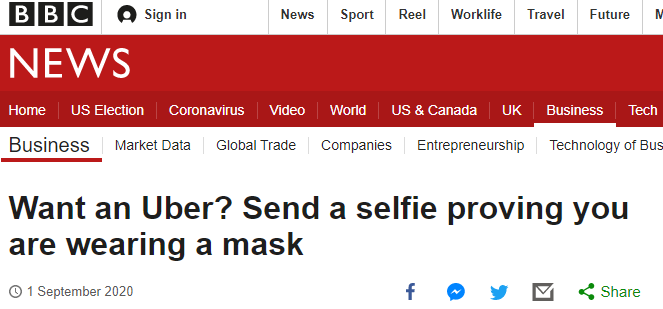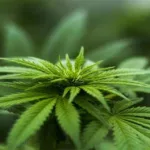As an added safety feature for both passengers and drivers during this pandemic, Uber recently disclosed that they will be requiring riders to provide face-mask selfies before boarding. This will apply to riders who have been previously reported not wearing a mask. The selfie scanner is an added feature on Uber’s app that will help drivers verify if the passengers are following their mask wearing policy. This selfie feature will be available in the US and Canada by the end of September.
BBC News: Uber introduced a “No Mask No Ride” policy requiring both drivers and riders to wear a face covering at all times during a ride

BBC News shares that Uber is all set to introduce a selfie feature on its app so that drivers can verify some riders are wearing face masks. The selfie scanner, to be used in the US and Canada by the end of September and other regions after that, will look for a mask-like covering over the mouth and nose.
It will apply to riders who have previously been reported for not wearing a mask.
Currently, drivers must take a mask selfie each day before starting work.
If the scanner does not detect the driver is wearing a mask they are blocked from using the app to pick up passengers.
Drivers and riders are able to cancel a trip without charge if they report the other party is not wearing a mask. Failure to comply can lead to account deactivation.

The Associated Press: Mask slackers will now have to provide photographic proof they’re wearing a face covering before boarding an Uber

The Associated Press reports that the San Francisco-based company unveiled a new policy Tuesday stipulating that if a driver reports to Uber that a rider wasn’t wearing a mask, the rider will have to provide Uber with a selfie with one strapped on the next time they summon a car on the world’s largest ride-hailing service.
The mask verification rule expands upon a similar requirement that Uber imposed on its drivers in May to help reassure passengers worried about being exposed to the novel coronavirus that has upended society. Now, Uber believes it’s time to help make its drivers feel safer, too.
The additional safety measures are part of Uber’s ongoing efforts to rebuild a service that has seen ridership plunge this year.








